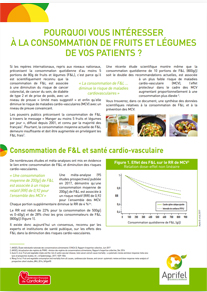Scientific news
Discover five recent scientific articles from our food, health and sustainability watch.


The eating habits of Italians are increasingly inconsistent with the Mediterranean diet. A recent study assessed the potential environmental, economic and health impacts of this lower adherence. To this end, current Italian food patterns (CIFP) were compared to a traditional Mediterranean diet through a Life Cycle Thinking (LCT) approach and carbon footprint analysis. Compared to the Mediterranean diet, CIFP has +133% greater impacts on the environmental macro-area, +100% greater impacts on the human health macro-area, and +59% greater impacts on the economic macro-area. The analysis also shows that CIFP has a carbon footprint +142% compared to the Mediterranean diet.

A systematic review examined the avaiblable work on consumers willingness to pay for healthy foods. Twenty three out of the 26 experiments included in this review found that consumers would pay a 5.6% to 91.5% (mean 30.7%) price premium for healthier foods. According to the review, adults over 60, women, and people sufffereing from obesity are more likely to be willing to pay more for healthy foods than younger, healthier, and more educated consumers.

Researchers investigated the influence of the parents’ quality of diet on their children’s food consumption in families at high risk for developing type 2 diabetes across Europe. 2095 families completed food frequency questionnaires and anthropometric measures were obtained. Results show that parental diet quality was positively associated with children’s fruit intake and inversely associated with snacks consumption. This work also found that most parents and children showed under-consumption of healthy foods according to the European Dietary Guidelines.

A recent study was conducted to investigate the association between screen time and lifestyle behaviors in American adolescents. Based on the Youth Risk Behavior Surveillance System, this cross-sectional study evaluated two types of screens: television and computer. Results show that 19% and 43.4% of the participants spent more than two hours a day watching television and using the computer, respectively. More than 2 hours of screen time per day was statistically associated with unhealthy behaviors, such as lack of physical activity, lack of sleep, and insufficient consumption of fruit and vegetables

In order to increase fruit and vegetables consumption among children, a three-year school-based multicomponent intervention was conducted in 14 primary schools in the City of Zagreb. A total of 681 children took part in the intervention, which included several components such as interactive workshops and the implementation of new dishes into the school food system. Fruit and vegetables intake was assessed using a semi-quantitative food frequency questionnaire. Results show that an increase in fruit and vegetables intake was achieved in 89% of children, while 25% more children reached the daily recommendation of 400 g. This work highlights the value and effectiveness of multicomponent intervention to increase children’s fruit and vegetables consumption
